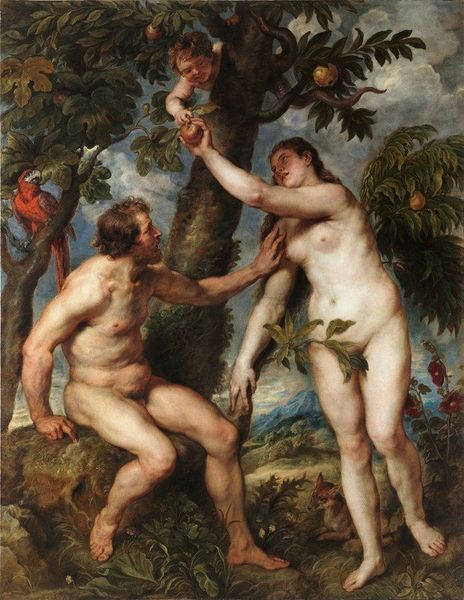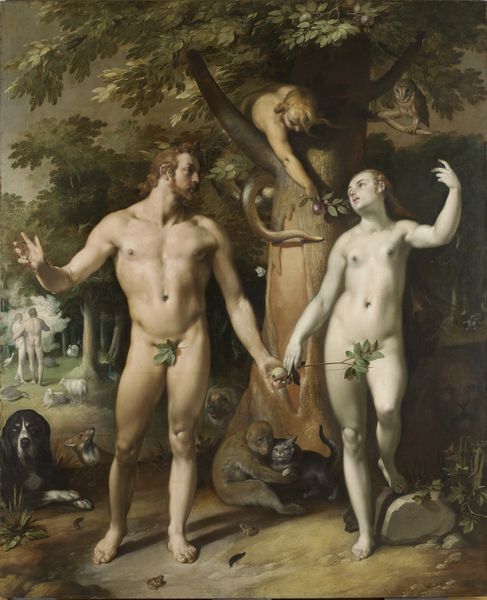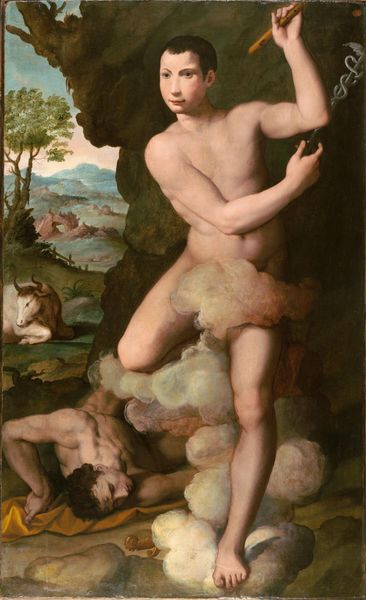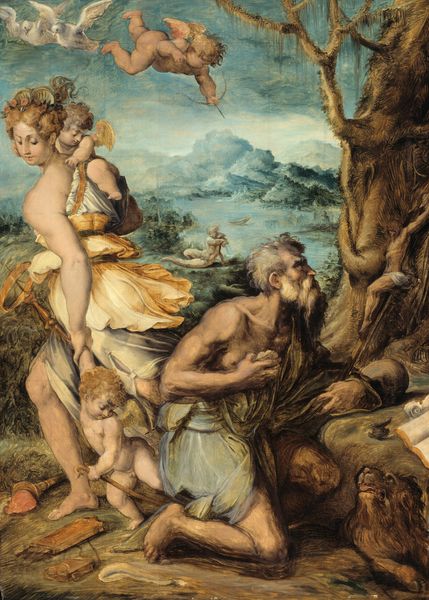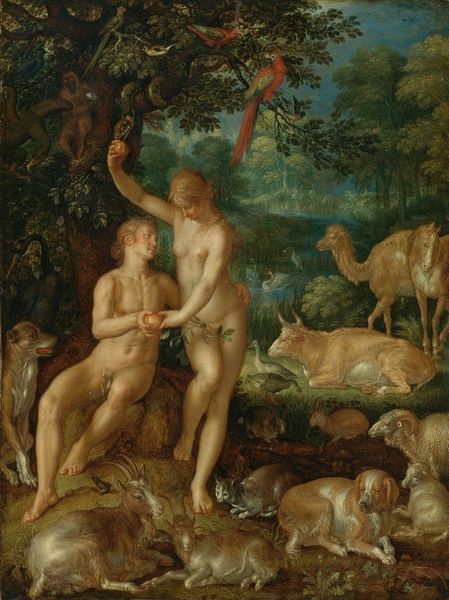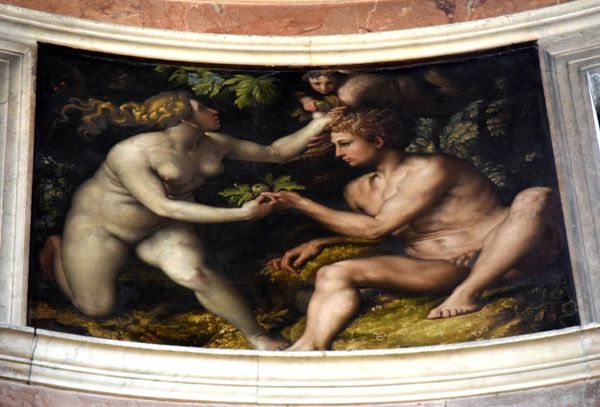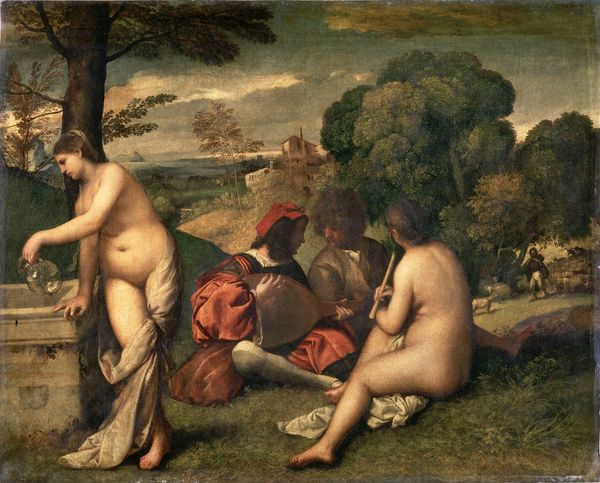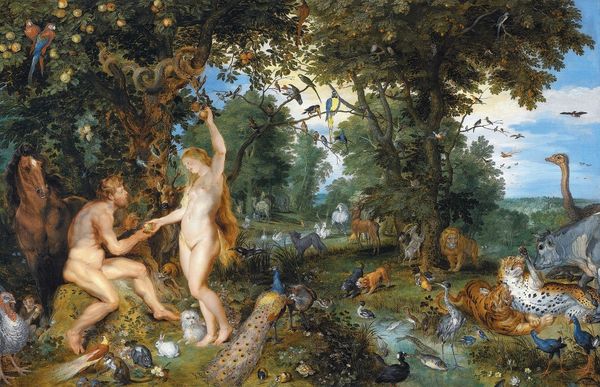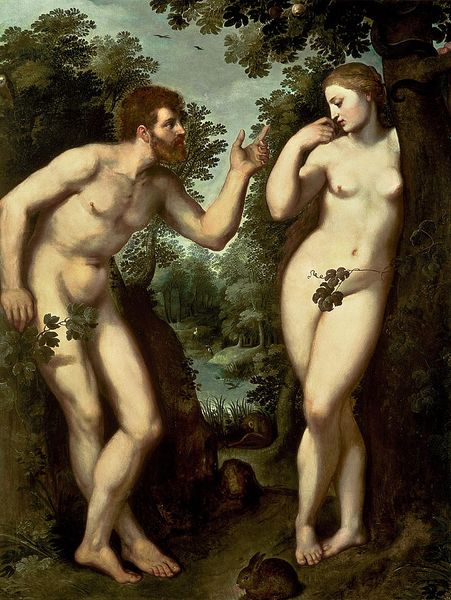
Dimensions: 240 x 186 cm
Copyright: Public domain
Curator: Here we have Titian's "The Fall of Man," an oil painting from around 1550, now housed in the Museo del Prado. Editor: It’s incredibly tactile. The way he renders skin, the textures of the leaves, you almost feel you could reach out and grasp the scene. Curator: Absolutely. Titian, deeply entrenched within the Venetian Renaissance, understood the drama inherent in narrative painting. This work speaks volumes about the changing socio-religious climate. Depictions of the Fall moved away from austere symbolism to emphasize human drama. Editor: What strikes me most is the active process on display – Adam reaching, Eve receiving, and the Cupid figure literally extracting the apple. The painting pulls you into that singular moment of labor, where choice is exercised and alters the raw material, so to speak, of their innocence. Curator: The composition is no accident. Titian likely had access to various interpretations of Genesis that shaped this unique representation. Take the figure of the child-like Cupid; this figure signals how interpretations shifted and became complex. He injects commentary about love, lust and legacy directly into the traditional biblical scene. Editor: And look at the paint application! He doesn't shy away from showing his hand, the materiality of oil layered to create shadow and tension. That snarling dog in the background--made up of hurried brushstrokes—amplifies the narrative's intensity. Curator: Yes, and consider where this painting may have been originally displayed—a grand palazzo, or within a private chapel, shaping interpretations and perhaps encouraging dialogues around sin and redemption in different contexts. Editor: Knowing his patrons shaped these decisions underscores the power dynamics embedded in the work, shifting this seemingly religious piece to something rooted in a world of class and commerce. Thank you! I saw "The Fall" under a different light. Curator: A fittingly fruitful discussion, indeed! One sees not just a rendering of a Biblical moment, but also the unfolding of Renaissance artistry, ambition, and its reverberating legacy.
Comments
No comments
Be the first to comment and join the conversation on the ultimate creative platform.
